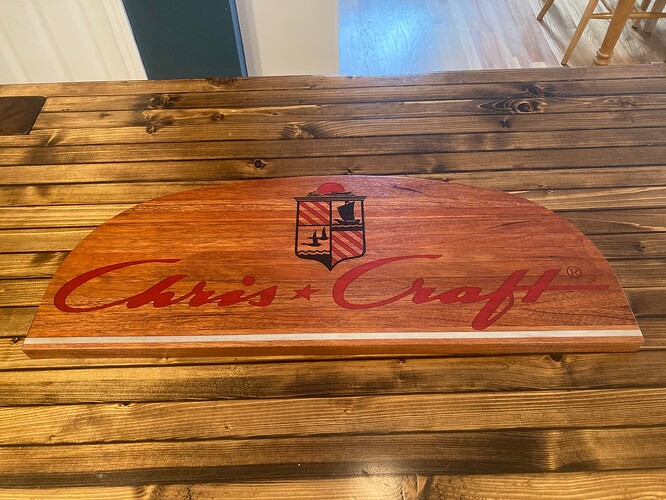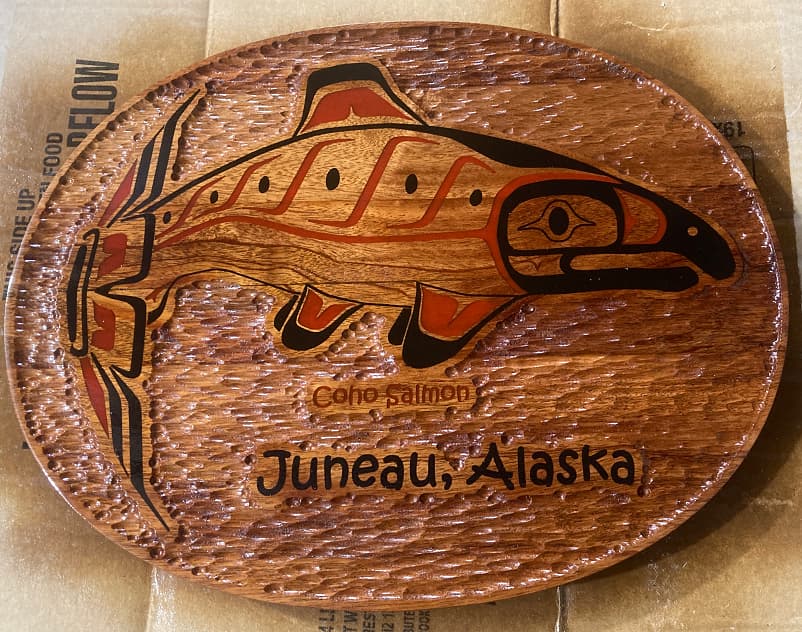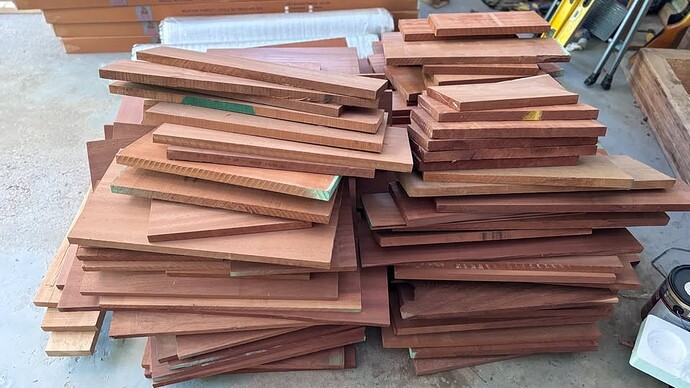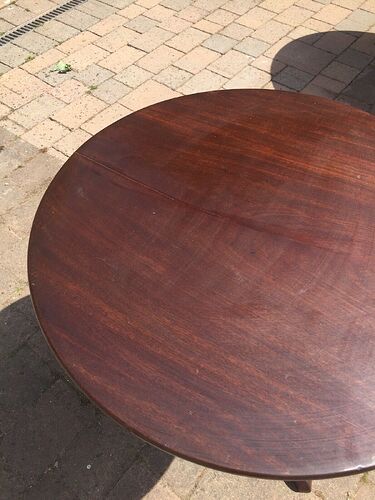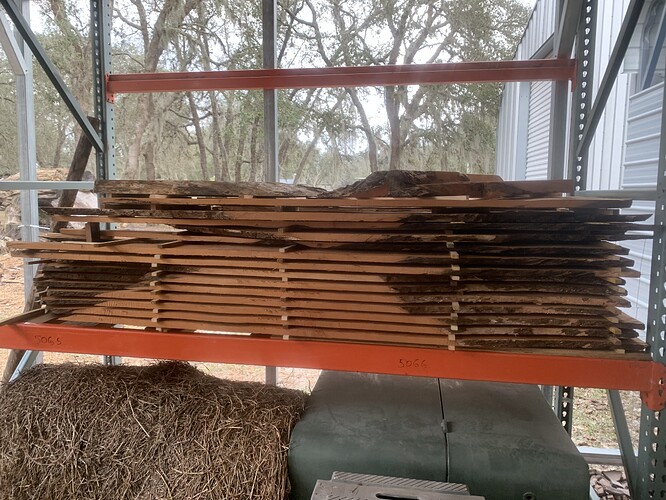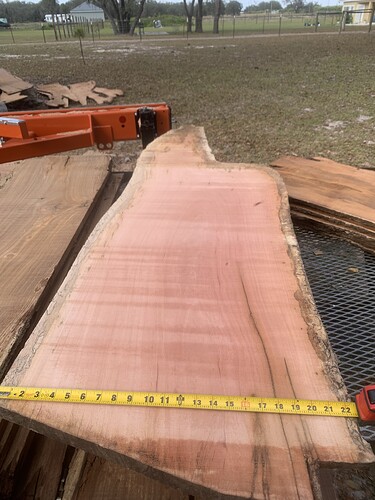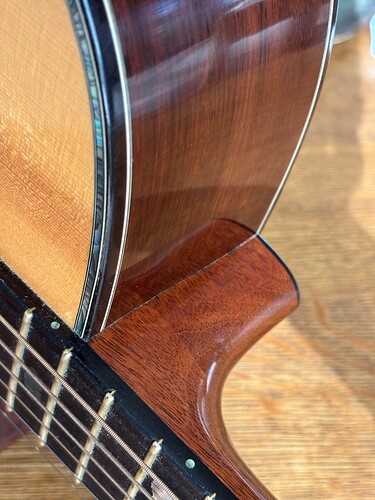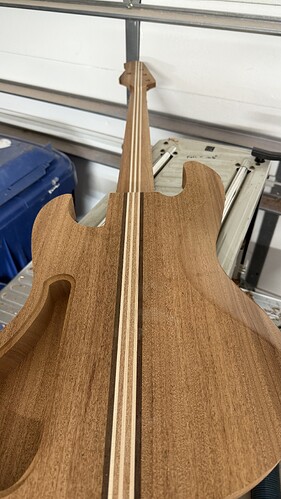I’m no wood professor…Just curious if anyone has cut mahogany on their CNC. I’m wondering if it would be good for projects or maybe for inlays. I might have a chance to get some and may do so if the feedback here is good
It cuts beautifully. Used to use it for die models. It’s dense, tight straight grain, carves and sands easy.
I agree with @Tod1d about Mahogany. It cuts very nice and looks great with oil based finishes. A couple of years ago I bought two pickup loads of oak and mahogany from a guy on craigslist. A lot of the wood was glued up. The wood came from a church furniture factory that went out of business. I resawed it up and still have some of it. Mahogany is a pleasure to work with. The only issue with Mahogany is it is expensive.
Nice work Tod! Thanks for the info.
Note that sapele is often passed off as mahogany, or, if one needs a wood with similar characteristics, may be an option.
Saw this on Marketplace today. Cutoffs from 24x12 and a lot of smaller/longer pieces. He’s asking $200 Cdn which is around $150 US. I figure thats a decent price and if I can get him down a bit I’ll have more mahogany than I know what to do with… a lifetime supply ![]()
What Tod1D said. Nice tight grain.
I don’t know about in the US, but in the UK you can pick up the VERY BEST old Brazilian mahogany 1" thick 36" long as cheap as chips. You just need to look on e-bay etc. for antique mahogany/dark wood table. Nobody wants dark wood furniture over here and people are giving away excellent quality mahogany tables virtually for free. I now have a stack of it which is the best wood for making patterns for metal casting, it cuts great!
It’s worth a look before you go spending a lot of money on “modern” mahogany. You just need to be able to work around a few screw holes in the back.
An example: one piece of mahogany for the 36" top. I paid £5
Unfortunately, in the U.S. at least, most such furniture is veneered (says the guy who needs to find the time to restore and refinish a table whose leaves were nibbled at by a mouse trying to get at the hide glue used for the veneer).
Walnut will often be solid though.
That said, the ability to look at old furniture, determine it isn’t historically/intrinsically valuable, and to calculate the number of board feet of lumber and the species is a valuable skill.
The mahogany used in the finest furniture and guitar necks is from Honduras, or was before extensive harvesting. Much like Gabon ebony, other sources have risen to take its place in the market. Some of these are good substitutes, others not . “Philippine mahogany”, aka luan, is a more brittle, stringy substitute far less desirable outside of door frames.
Honduran mahogany cuts like butter and is very dimensionally stable which is why it’s been the preferred wood for acoustic guitar necks. It’s somewhat soft for a hardwood but will take detail reasonable well. I’m currently using some 3" x 8" planks I acquired in the 1980’s to make jewelry boxes. This stock was originally for guitar necks but I’ve retired from that onerous business.
I managed to strike a deal and will be going to pick it up tommorrow. The seller says there’s enough to fill the bed of his F150 truck. Looking at more pics he sent me shows a lot of narrower pieces but I’ll use them for inlays and coasters etc. There looks to be quite a few larger pieces which is what I’m after. I’ll likely resell a lot of the smaller stuff if I can as well.
I’ll update when I get it sorted and take a few pics
I use Mahogany a lot in my business and often use it on the CNC - it’s a great wood and it machines very well. I also use a lot of Sapele - which is less expensive, looks great, and machines just like Mahogany.
This stacked table is all Mahoganies (Honduras, Philippian, and Sapele) interspersed. Every layer was cut on the CNC.
- Gary
Those look very nice! How wide are they?
For those interested in what constitutes a genuine mahogany and why it might matter:
I hadn’t heard of Cuban mahogany since its export ceased the year I was born. Note that some wood called “mahogany” isn’t even in the same order, let alone family or genus, as Swietenia.
If you’re concerned about a particular wood’s details such as dimensional stability for making acoustic instruments or hardness for flooring, the Wood Database from which this article is extracted is an excellent resource.
The neck is Honduran mahogany filled with an oil-based paste wood filler. The side is Brazilian rosewood, pre-embargo from the early 1970’s, the fretboard Gabon ebony, top of “German” spruce, binding is dyed maple. The finish is 15 or so coats of various substances culminating with nitrocellulose lacquer. These days I’d use water based formulas but lutherie was harder even than teaching, I’m retired from both
The Mahogany shown comes from older trees from the Fl Keys and was supposedly stock seeds brought over in the late 1950’s to early 1960’s from Cuba. I was born and raised in south Fl and in/out of the Fl Keys and can validate this is the sourced location of this wood. Now as to the variety being “Cuban” Mahogany I have to defer that statement from my grandfather who was a carpenter in the same area, long before I was born.
It’s beautiful. Lots of wonderful things to be made from that!
Thanks, I appreciate the article you posted. I reviewed it and certainly re-enforces the origin of this lumber. It also has the specific characteristics mentioned in the article. Should be dry enough to start using now. Im sure the 4/4 is dry, this wood has been been in log form for at least 5 years and was cut fairly recently.
